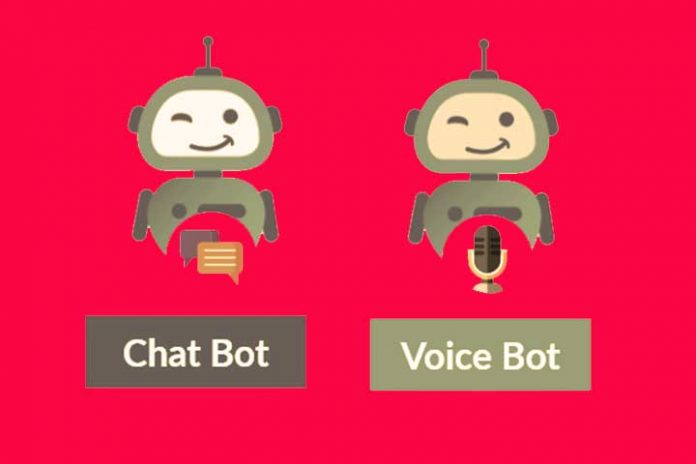Chat and voice bots are more successful today than ever and, through numerous use cases, offer opportunities for cost savings through automation, but also for increased earnings and market differentiation by banks when used in the customer interface.
Chatbots are digital robots that, when configured accordingly, communicate with people in natural language on predefined topics. Chatbot users communicate their concerns via a chat dialog in everyday language, which is far more intuitive and understandable than navigating through menus. These bots can also have a vocal user interface. Then they also understand spoken language and respond in this – for example within the framework of Voicebots as a starting point in the telephone hotline. Another example is assistance systems such as Apple’s Siri.
Chat and Voice Bots in everyday life
A simple example from everyday life is ordering from Amazon. The questions about the order are processed via automated chat and voice bots and the film is selected, borrowed, and started from the online library via Alexa. The entire customer interaction is automated via bots and vocal user interfaces. Many other examples can easily be identified, such as the voice assistant in the car, which can not only start navigation via voice but also control telephone conferences and coordinate appointments.
These automated customer interactions are more of a role model in the banking world today and are not necessarily lived practice. But usage will increase: Gartner predicts that by 2022, 70 percent of all customer interactions will take place using technologies such as machine learning, chatbots, and mobile messaging.
The Digital Pulse Check 4.0 carried out by Zeb also shows that banks want to invest heavily in process optimization through new technologies (such as artificial intelligence) over the next two years. Overall, the institutes plan to double the use of these technologies for process optimization during this period.
Potential use for banks, especially in customer service
Basically, chat and voice bots result in market differentiation from competitors, increases in earnings, and cost savings as advantages for banks. One example is the use of technology as the first touchpoint in the customer service center.
The customer service center is just one of many use cases
In addition to the customer service center, there are other promising use cases for automated interactions via chat or voice.
Four examples of use cases are described below:
1. Bot as a replacement for native apps
If the bot can be integrated without friction, i.e. works in all browsers, for example, and can be easily integrated into apps, then these bot solutions can be used to map traditional apps or online routes. Processes are implemented directly in the bot. This is more intuitive to use for customers, as they do not have to work their way through menu structures, but are guided through a process created in dialog form. This saves development costs for the bank, because processes can easily be added after the bot has been initialized. In the background, these processes can then be linked with other technologies such as OCR or artificial intelligence in order to be able to handle them fully automatically.
2. Product advice and conclusion
With the help of an appropriate configuration, automated advisory processes can also be implemented for various products, and the products can be concluded.
3. First level IT support
The technologies are the first point of contact for the IT department in first-level support. The same advantages result. Support inquiries are processed more quickly and remain in place for a shorter period of time. IT capacities are relieved and can be used for other purposes.
4. Chatbots for surveys
In addition, chatbots can map classic surveys – for example on customer satisfaction – in dialog form and generate higher response rates than conventional methods.
Chat and voice bots offer opportunities for the financial sector
The examples mentioned make it clear that the use of chat and voice bots as well as the integration of the vocal user interface are not only interesting for large tech companies but also offer great opportunities for the financial sector in the coming years through various use cases. Banks should check for themselves which use cases make sense and incorporate this into the strategy and take them into account in the planning process.


